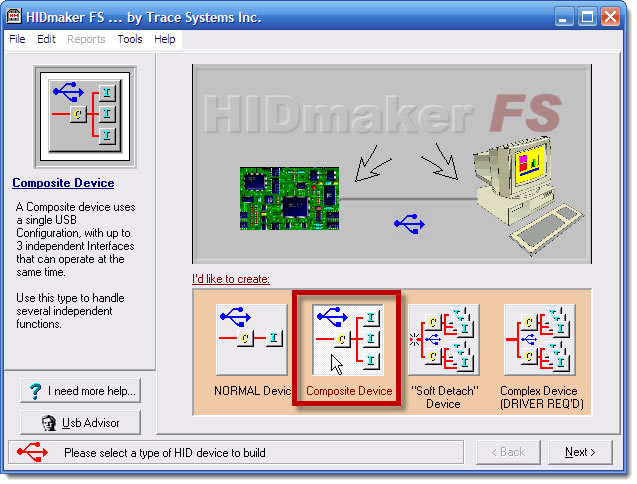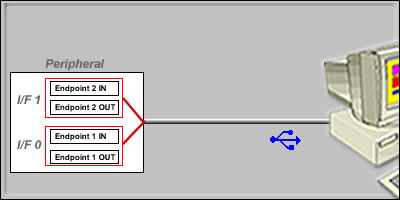USB Posts
This category of our blog contains articles and tutorials about USB devices, as well as our tools that use USB connectivity.
This page shows summaries of the most recent blog posts in this Ethernet category of our blog. To view an entire post, either click on its title, or on the Read More... link at the end of the introductory text of each blog post.
Be sure to add your comments on these blog posts - we'd love to get your feedback. Let us know your opinions on what you read here, and please let us know what other topics you'd like to see us cover.
Composite Devices - Part 3
In our last installment you learned, step by step, how to build up a USB Composite Device in HIDmaker FS. Along the way, you saw that the set of data items that is used by one of the USB Interfaces in your Composite device (which we call an Interface Data Set) can be either made from scratch, read from a file that was saved from another HIDmaker project, or some mixture of the two.
You also read about why both the Name and the Usage (= the combination of Usage Page and Usage ID) for each USB transfer variable must be unique across your whole project, so both your compiler and the PC's HID device drivers can always distinguish each variable from all other variables in your project.
This time we'll talk about how HIDmaker's generated PC code talks to multiple Interaces in a USB Composite Device, and how (and why) you can modify that behavior.
{readmorelink}Read More Of Composite Devices Tutorial Part 3...>>{/readmorelink}
Composite Devices - Part 2
How to Make a USB Composite Device with HIDmaker FS - Part 2
In our last installment, we covered these concepts:
- What a USB Composite Device IS,
- Why you might want to make one,
- Some of the different ways the different USB Interfaces in your Composite device might or might not relate to each other,
- And we began to talk about HOW you can easily make a USB Composite Device.
Today we're going to go into more detail, and actually show you how to quickly build up a USB Composite Device using HIDmaker FS. As we go along, we'll show some things to watch out for, and some tricks that can help you along the way. Today we'll build up a device that contains two USB Interfaces, neither one of which is a keyboard or a mouse. Adding a third USB Interface (if you need to) is straightforward, as we'll show below.
If one or more of your USB Interfaces is a mouse or a keyboard, there are some special considerations to be aware of - we'll discuss those in our next installment (Part 3) of this tutorial.
Building a USB Composite Device Using HIDmaker FS
Step 1 - On the first page of the HIDmaker FS wizard, choose a Composite device, and click Next

Composite Devices - Part 1
How to Make a USB Composite Device with HIDmaker FS - Part 1
One of the capabilities that makes HIDmaker FS really powerful is its ability to make a USB Composite Device. A Composite device is a single piece of hardware, that connects to the PC by a single USB cable, but which acts as if it contained multiple independent USB devices inside it. Each one of those seemingly independent devices (labeled "I/F 1" and "I/F 2" in the diagram below) is actually just a separate USB Interface.

